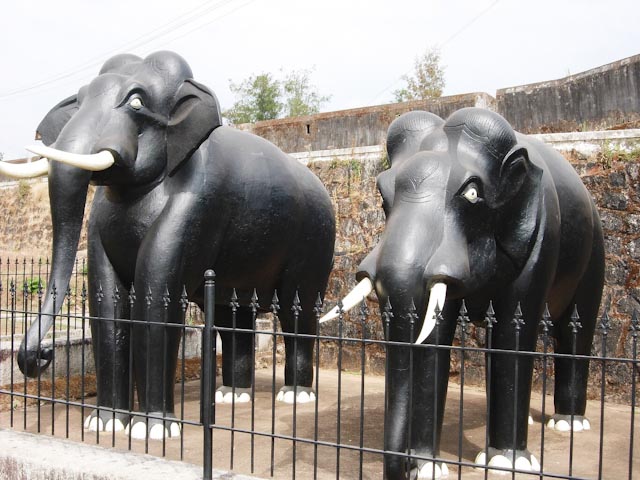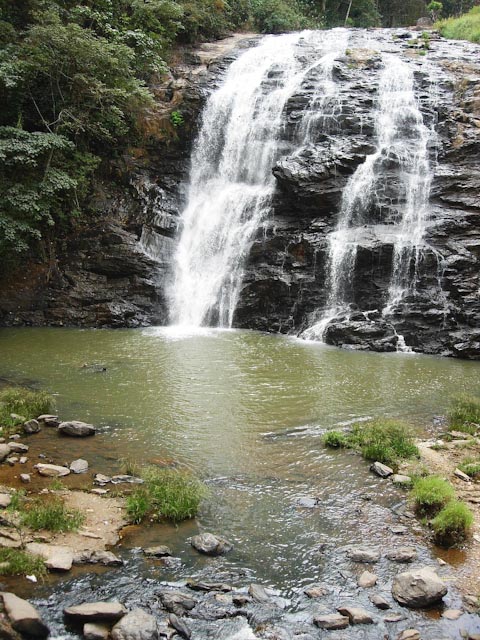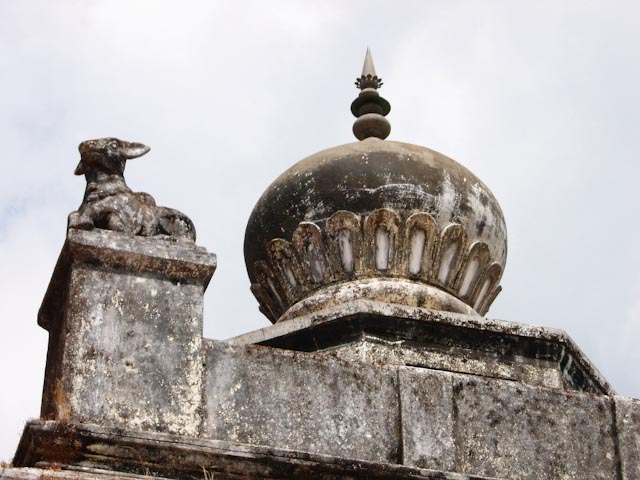Reading the Deccan Herald this morning over my breakfast dosai, I noticed a regular feature called SSLC Mentor – to sharpen students’ skills. Today was factors and factorisation (one of my old favourites) with the spotlight on surds. It’s a pity we don’t have some of this in our own papers at home, as it’s not just student minds that need exercising.
Another two articles titled Braving an American Typhoon and India Can Ride Out the US Turbulence analysed how the probable US recession will impact India, particularly in the area of IT spend. At present IT companies are trying to be positive until US annual budgets are confirmed; some even say they may get more business as the US tries to cut costs with more outsourcing. India currently exports $50b in IT services and 66% of this is to the US – having said that, the export of services only represents 9% of India’s total GDP. An interesting trend to keep an eye on is the fact that Indian companies are starting to hire ‘fresher’ from Tier II cities and also non-engineering graduates.
After breakfast I followed DM’s progress up to the fort. Whilst still in tact, the fort is more a home of officialdom and bureaucracy, these days housing the municipal administration. People were coming and going and queuing up with pieces of paper to transact business. Poking my head into one open vestibule I saw signs for Xerox and Fax and three desks supporting large manual typewriters.
Up on the fort’s ramparts I walked around the hexagonal perimeter that allows for excellent views over the town. At a quick glance, the town almost looks like a leafy suburb in Northern Sydney, with the whole basined valley full of trees and red-tiled roofs. On closer inspection it reminds me distinctly of Nairobi and has the feeling of a frontier town. With those jagged blue hills as a backdrop, Madikeri is still the busy bustling metropolis described by DM after living in Devangeri for a period (after first calling it an enchanting backwater).
From the ramparts, I too, can see in the distance on the other side of town those ‘conspicuous gilded domes’ which are part of the mausoleums of two Coorg rulers, Doddavirarajendra and his brother Lingarajendra (do you reckon they called each other Dodd and Ling?) who both died in the early 1800s.
Miss Jones, my mental secretary, takes a note of their geographical location, as once I’m down in the town I will completely lose sight of them.
Literally right under my nose, just outside the fort, is the prison yard. I had already witnessed earlier three khaki-ed guards escorting a brace of manacled prisoners through the fort precincts. I tried to be respectful and not gawk at them, but I felt them staring at me without reserve.
Now I was up on the ramparts, my red head had appeared over the parapet and distracted them from their morning lounging, smoking and dhobi activities. I suppose, given that I was only tall enough to poke my head over, they are not used to seeing many observers, much less female ones. Their yard was beaten earth and there was a sad little garden at one end with a couple of bedraggled roses. I quickly withdrew before I got them (or me) in trouble.
On the inside of the fort, were two life-sized replicas of elephants.  The last Raja was reputed to be both cruel and mad. Every morning he liked to be wakened by two special elephants trumpeting under his window. One day (probably anticipating a bender) he sent a message to give the next morning a miss, but the mahouts never got it. The temper tantrum resulting from his premature rise saw him order that the mahouts and elephants be killed on the spot. Later when regret set in for the loss of his clever elephants (not the mahouts, mind you), he built these statues in their honour.
The last Raja was reputed to be both cruel and mad. Every morning he liked to be wakened by two special elephants trumpeting under his window. One day (probably anticipating a bender) he sent a message to give the next morning a miss, but the mahouts never got it. The temper tantrum resulting from his premature rise saw him order that the mahouts and elephants be killed on the spot. Later when regret set in for the loss of his clever elephants (not the mahouts, mind you), he built these statues in their honour.
I briefly considered walking the 8km to Abbi Falls (a tautological name like 'PIN number' as Abbi means waterfall in Kodavatak), but decided an auto rickshaw would be a better use of my time and energy. Given that the first ten minutes of the journey involved the driver turning off his engine and coasting down the steep hills in neutral, I realised I’d done good.
Out of the main valley of the town, climbing over the next ridge, there wasn’t a house to be seen, only lush dark forest and the odd cultivated patch of earth. Once dropped off in the car park, I set off down the man-made path which was lined on either side with trim hedges of bougainvillea, and depressingly, plastic and foil snack detritus.
I don’t know what it is about us humans and large bodies of water, forests and mountains, but they have the effect of allowing the mind to breath and the heart to relax. I could hear the roar of the water long before I’d fully descended the path. I was surprised at the volume of water spraying and pounding over the 60 foot drop of glistening coal black rocks as many falls are reduced to a mere trickle outside of monsoon season.
Trying to ignore the rubbish in the river under the suspension bridge (why do Indians feel it’s acceptable to desecrate these sacred places?), I sat and absorbed the wafting breeze and the crashing water. At one point a gust of air sent down a confetti of twirling green leaves from the thick canopy, which was shot through with red and gold. 

On the drive back I asked the driver to take me to the Raja’s Tombs. We drove through narrow hilly streets where wafts of cardamom and roasting coffee floated out of small shop fronts.
Alas, the domes are no longer gilded, and much of the fancy architectural ornamentation described by DM is no longer in evidence, although several Nandi bulls still presided over these Shiva worshippers.
My last stop in Madikeri was Raja’s Seat, a lookout from a park offering the most spectacular views into the deep valley below. After scrabbling down some paths and sussing out the best viewing spots, I sat on one of the black granite benches where the erosion underneath allowed me to swing my legs unimpeded.
This spot is obviously a magnet for couples to hang out together and I couldn’t help but notice the two next to me as they laughed and chatted. They’d both bought ice creams and as they slipped off the cardboard packaging, they both casually threw their rubbish down the hill.
It was all I could do not to say something – but what to say? There was already a scattering of rubbish down there and I’m a guest in this country after all. The imagined conversation would probably go:
‘I don’t suppose you could throw your rubbish in the bin by the gate?’
Surprised smiles and shrugs. ‘There is already one here.’
‘Yes, but we are both paying money to look at this one.’
I just don’t get it. Particularly as Indians are generally so fiercely patriotic and love their country. If only this fervour could be harnessed to preserve the beauty of their countryside.
But I’ve travelled enough to know this is not just an Indian problem. Egyptian guards (whose job, inter alia, is to deter ruinous flash photography) urinate in their own sites causing enough ammonia fumes to wilt the face off the sphinx; tour operators in the Red Sea off Hurghada anchor their boats on the reefs damaging and killing the coral they are bringing their customers to come and see; Turkish photographers throw their cigarette butts into the natural calcified spring pools they are directing their subjects to stand in at Pamukkale. There is a complete disconnect in their minds between the source of their income and the desecration they are causing.
When I think of the ‘Do the Right Thing’ campaign in Australia in the ’70s it makes me proud to think that the vast majority of Australians would rather carry garbage around all day than dump it just anywhere. Something I take for granted at home.
On the positive side, I am reminded of Anubhav’s constant reiteration of Intrepid’s environmental and community policies. I also remember him remonstrating with a local vendor who thought he was doing him a favour by disposing of his rubbish (on the street) and how Anubhav picked it up and carried it away.
I guess you have to start somewhere and I wish Intrepid and companies like them all the best with their acorn planting.

Comments
Total Comments : ( ) You have to register to post a comment.
RECENT COMMENTS